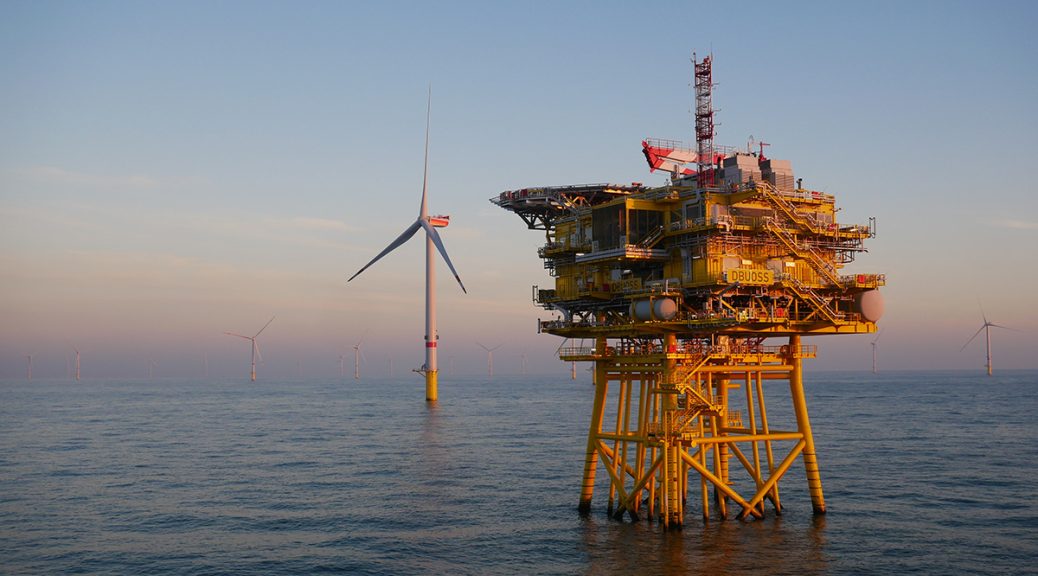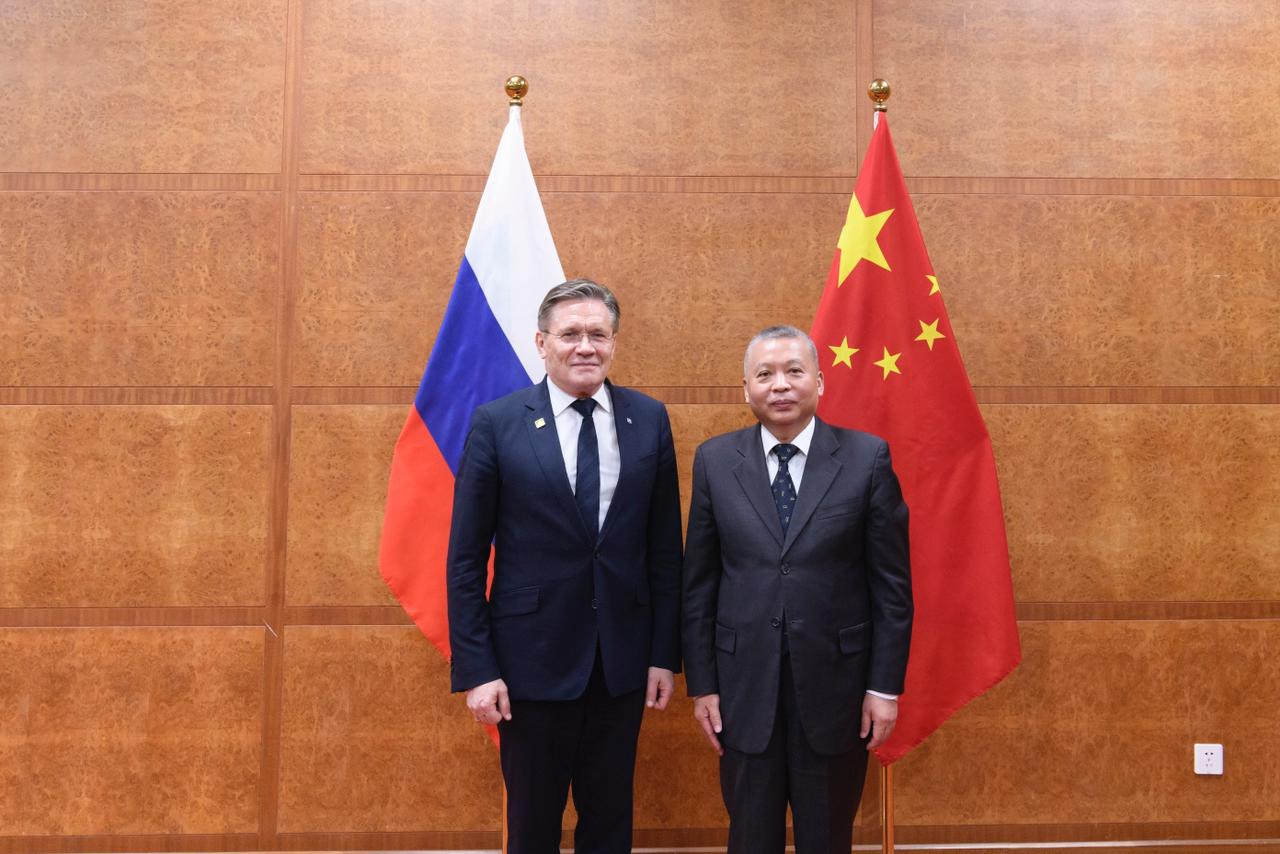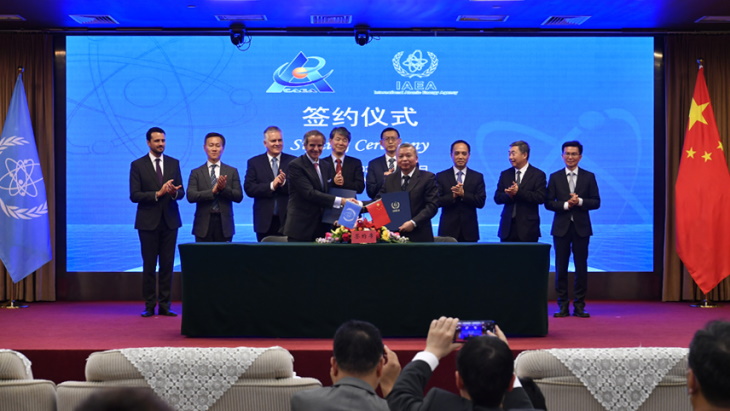The United Kingdom (UK) is re-engaging with the North Seas Energy Cooperation (NSEC). At a signing ceremony on Sunday evening, the UK has signed a Memorandum of Understanding (MoU) with NSEC members the European Commission to this effect. This will help make the North Sea the renewables powerhouse of Europe. The NSEC is how North Seas countries collaborate on offshore wind. Cross-border cooperation is key to offshore wind. Countries need to coordinate how they develop their offshore wind farms and connect them to the grid and how they impact on biodiversity.
The UK today signed an MoU with North Seas Energy Cooperation (NSEC) members and the European Commission to re-engage with the NSEC. The NSEC facilitates the coordinated development of offshore wind and offshore grids in the North Sea, the Irish Sea and the Celtic Sea. Today’s MoU allows for engagement between the UK and NSEC, following the UK’s departure from NSEC when Brexit took effect three years ago. The MoU covers the time until 30 June 2026 and signals a new phase of UK-EU cooperation. The NSEC consists of nine countries: Belgium, Denmark, France, Germany, Ireland, Luxembourg, the Netherlands, Norway and Sweden.
Europe is set on a rapid expansion of offshore wind, which is accelerating on the back of the war in Ukraine and REPowerEU, the EU’s energy policy response to it.
To strengthen its energy security and ensure affordable electricity for European families and businesses, EU countries now want 110 GW of offshore wind by 2030. And the UK wants another 50 GW. They are and will remain the leading country in Europe on offshore wind. It’s a no-brainier that the EU and UK collaborate on how they build out and connect their offshore wind farms. Both sides get this and want to collaborate closely. Hence the MoU.
Giles Dickson, WindEurope CEO, said: “Well done to the EU and UK. It makes absolute sense for both to collaborate on offshore wind. It’s great they’re going to do so with this MoU. It’ll help improve energy flows between countries in North West Europe, which is good for energy security across Europe. It’ll help pool investments in offshore infrastructure which will be good for energy bills. And it’s good for maritime spatial planning and biodiversity: the best approach to protecting marine life is the sea-basin wide approach.”
The North Sea will remain Europe’s renewable powerhouse. The last meeting of NSEC Energy Ministers in Dublin in September committed the 9 NSEC countries (as they were at the time) to 76 GW of offshore wind between them by 2030 and 260 GW by 2050 – most of it in the North Sea. Today more than 75% of Europe’s offshore wind turbines are located in the North Sea. New players such as Ireland, Spain, Portugal, Italy, Greece, Poland, the Baltic States are now entering the offshore wind game. But the North Sea will still host 80% of all installations over the next five years and will still make up 50% of Europe’s total offshore wind capacity by 2050.
Dan McGrail, RenewableUK CEO, said: “As the UK’s offshore wind fleet continues to expand rapidly in the North Sea, opportunities to work even closer with our European colleagues on sharing investments in infrastructure, building more interconnectors and protecting biodiversity will benefit everyone by enabling us to scale up on vital new deployment. This will enable us to boost energy security in the UK and across Europe at a time when we need to move away from expensive imported gas as fast as possible. The North Sea is becoming a renewable energy powerhouse which is already reducing bills for consumers, creating hundreds of thousands of jobs and attracting billions in private investment as we build up new industries and new supply chains. This agreement means we can maximise co-ordination with our European partners to deliver these benefits even faster”.
More than 15% of Europe’s power is traded between countries. The UK traditionally imported electricity from its neighbours. Last year it imported 9% of its electricity. Now it’s exporting, especially to France where nuclear outages have caused supply problems. Today the UK has 8.4 GW of interconnector capacity. Another 7.5 GW received regulatory approval. More interconnector capacity is needed to reach the UK’s target of 18 GW by 2030.
In this context hybrid offshore wind farms and energy islands will play a vital role in connecting wind turbines to more than one country. The European Union and national Governments must urgently define a suitable legal framework for these projects. The North Sea is quickly moving towards an interconnected offshore wind grid. Offshore hybrid projects which serve as renewable power plants and interconnectors could make up one third of all offshore wind capacity by 2050. The UK has just closed its first call for applications for hybrid offshore wind pilot in October 2022. The Nautilus project connecting the UK to Belgium and the Eurolink project connecting the UK to the Netherlands are currently under initial project assessment by Ofgem, the UK energy regulator.
Offshore hybrid projects minimise the use of existing sea space. They are good for maritime biodiversity. And they ensure efficient electricity flows between countries. But investors will not put their money into these projects unless risks, costs and benefits are appropriately shared between developers, grid operators and society. This includes fair compensation rules when grid congestions occur.
Cordi O’Hara, President of National Grid Ventures, said: “We warmly welcome the UK re-engaging with NSEC, because we need all North West European countries working together to harness the full clean energy potential of the North Sea. Over the last few months, we have seen interconnectors strengthening security of supply across the UK and Europe, as they have done since the first link started operating almost 40 years ago. We now look forward to working with our partners to develop the next generation of hybrid projects, which will help to accelerate offshore wind while mitigating the impact of infrastructure on coastal communities. But none of us can do this alone, so we must build on the strong platforms we have established to deliver an integrated offshore grid that will maximise benefits for consumers across Europe.”
UK’s National Grid should also be allowed to rejoin the European Network of Transmission System Operators for Electricity (ENTSO-E). Only a coordinated, Europe-wide approach to offshore wind grid development and management can ensure that the expansion of offshore wind comes at the lowest price for society. The UK needs to be at the table for all discussions around offshore grid development.








